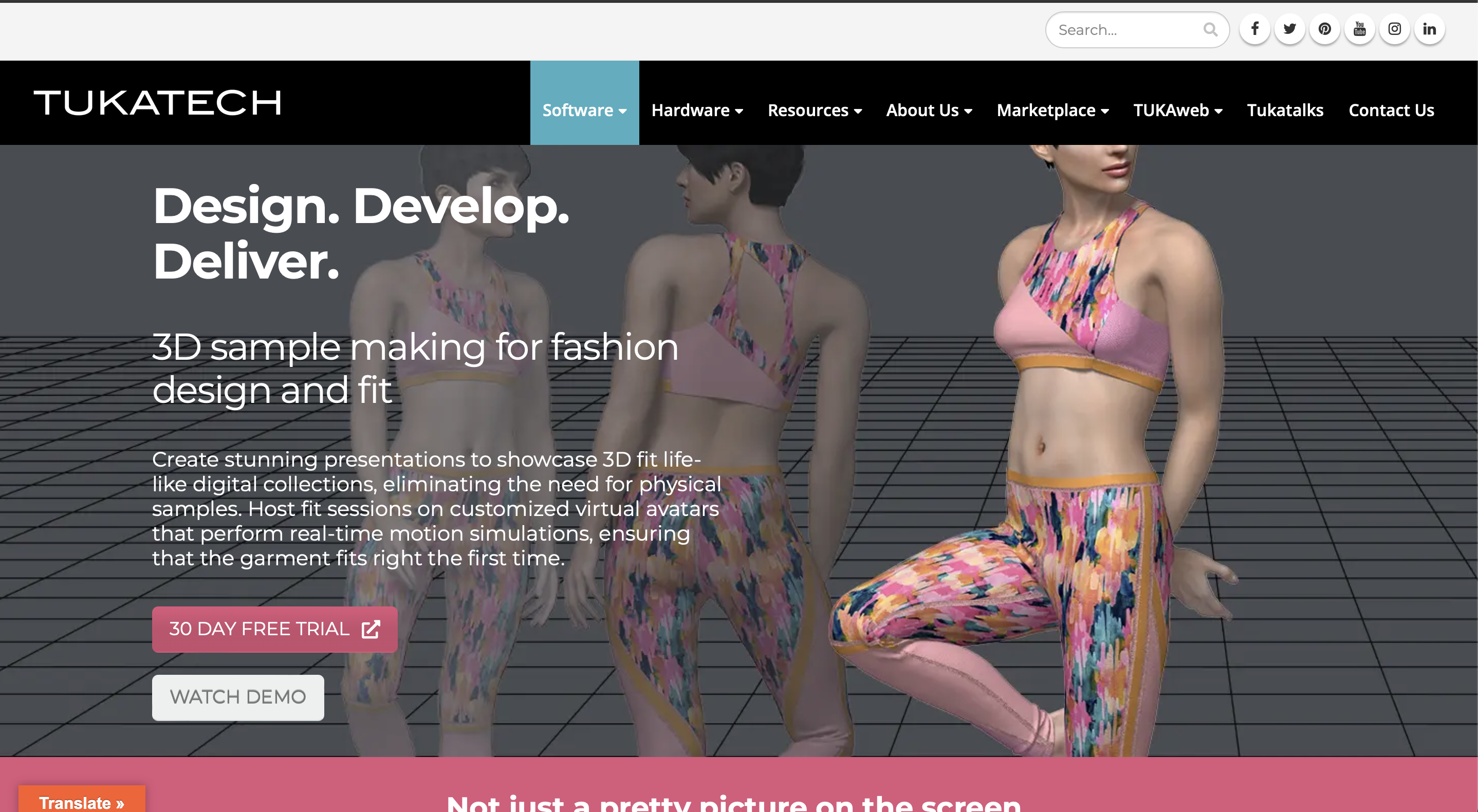Introduction
In the rapidly evolving world of fashion, textiles, and crafts, learning digital fashion pattern making has become increasingly valuable and sought after. As we enter the year 2023, advancements in technology have paved the way for innovative approaches to patternmaking, revolutionizing the way designs are created and translated into tangible garments or products.
This article serves as a comprehensive guide to help aspiring pattern makers navigate the realm of digital fashion, exploring the tools, techniques, and resources available to learn this exciting skill set.
Why should you choose digital pattern making? 🤔
Gone are the days of relying solely on traditional methods, which often involved manual drafting, measurements, and revisions. The advent of digital technology has brought forth a new era of efficiency, precision, and accessibility. By harnessing the power of specialized software and digital tools, pattern makers can streamline their workflow, experiment with design variations effortlessly, and create intricate patterns with unparalleled accuracy.

Learning digital pattern making in 2023 offers numerous advantages. Whether you are a fashion student, an independent designer, or an aspiring entrepreneur in the textile industry, acquiring digital pattern making skills can enhance your creative potential, expand your professional opportunities, and enable you to stay at the forefront of technological advancements within your field.
From selecting the right software to understanding the interface, tools, and techniques, we will delve into the fundamental steps required to master digital pattern making. We will explore online learning platforms, tutorials, and resources specifically tailored for beginners, enabling you to embrace this digital realm even if you have no prior experience with pattern making or design software.
Traditional vs Digital Method
It’s very important to differentiate between digital and the traditional method of pattern making first, so here’s a table highlighting the key differences between both:
| Digital Pattern Making | Traditional Pattern Making | |
|---|---|---|
| Tools 🛠️ | Utilizes specialized software and digital tools. | Involves manual tools such as paper, rulers, and drafting instruments. |
| Efficiency 📈 | Enables quick modifications, revisions, and design iterations. | Requires manual redrawing and adjustments for changes. |
| Precision 🎯 | Offers high accuracy and precise measurements. | Relies on the skill and accuracy of the pattern maker. |
| Learning Curve 🧠 | Requires familiarity with pattern making software and digital tools. | Involves learning manual drafting techniques and measurements. |
| Accessibility 🌐 | Online tutorials, courses, and resources make learning accessible from anywhere. | Availability of local classes and mentorship opportunities. |
| Cost 💰 | Involves software costs or subscription fees. | Cost can be more due to multiple uses of resources like tools and materials. |
| Collaboration 🤝 | Allows for easy sharing and collaboration with others digitally. | Requires physical sharing of patterns or manual collaboration. |
| Storage 📦 | Digital patterns can be easily stored, organized, and retrieved. | Physical patterns require space for storage and organization. |
| Industry Adoption 🏭 | Widely adopted in the fashion and textile industries. | Traditional methods still used in certain sectors and crafts. |
Selecting the Software for pattern making
When venturing into digital fashion world , choosing the right software is crucial. Here is a list of popular digital pattern making software along with a brief description of their features and capabilities:

CLO3D is a pioneering platform in the realm of 3D fashion design, delivering cutting-edge software for creating, customizing, and producing apparel. Recognized for its software, CLO, the platform is acclaimed by a diverse array of fashion enterprises globally for its ability to generate realistic 3D garment simulations, optimize production workflows, and accelerate the journey from concept to market availability.
Key Feature: Specialized software and virtual garment simulation. Enables 3D visualization, draping, and realistic fabric simulation. Facilitates efficient pattern adjustments and design iterations.
**Author Recommendation – If you are someone who is trying 3D for the first time start with CLO or Marvelous Designer.

Browzwear stands at the forefront of 3D fashion technology, offering advanced software solutions for apparel design and production. Its premier software, VStitcher, is embraced by a network of over a thousand fashion brands globally, providing a digital avenue for crafting lifelike 3D garment prototypes, enhancing production efficiency, and propelling market delivery.
- Design Precision: 3D tools for viewing designs in multiple fabrics/colors, catching issues early.
- Sustainability: Reduces material waste, saves costs, and benefits the environment.
- Speed to Market: Shortens development cycles, enabling quicker product launches.
- Enhanced Collaboration: Cloud-based platform for real-time global teamwork.

Optitex stands as an innovative force in 3D fashion design and pattern making technology, delivering robust software solutions for the apparel industry. Its flagship offering, Optitex Pattern Making Software Suite, is utilized by a multitude of fashion and clothing firms worldwide, enabling the creation of precise 3D digital prototypes, optimizing pattern making and production, and reducing the time from design to retail.
- Pattern Precision: Advanced pattern-making tools for accurate 2D and 3D garment creation.
- Resource Efficiency: Minimizes fabric waste and prototyping expenses.
- Market Agility: Streamlines the design to production process.
- Collaborative Dynamics: Supports a collaborative environment between designers and manufacturers.

Tukatech leads as a dynamic innovator in the 3D fashion design and garment manufacturing technology space, providing comprehensive software solutions for the apparel industry. Tukatech’s signature product, TUKA3D, is renowned among numerous fashion businesses globally for its virtual prototyping capabilities, enhancing garment fitting and production processes, and shortening the fashion product’s lifecycle from conception to consumer.
- Fitting Excellence: Offers precise 3D fitting solutions on virtual models.
- Material Conservation: Aids in reducing fabric waste through accurate pattern making.
- Rapid Turnaround: Accelerates the design and development timeline.
- Seamless Integration: Facilitates efficient integration with other systems.
Remember that software selection depends on your specific needs, budget, and level of expertise. It’s advisable to explore trial versions, demos, or tutorials provided by the software developers to determine which software aligns best with your requirements.
Learn the software interface and tools:
To effectively learn the chosen software’s interface and tools, consider the following steps:
- Online Courses: Kickstart your journey with platforms like Learn 3D fashion, Udemy, and Coursera. Opt for courses tailored to your chosen software, complete with hands-on exercises to build a solid foundation.
- Refine Your Skills: Seek out tutorials that go beyond the basics, offering in-depth insights into advanced techniques, ensuring you’re well-equipped to tackle any design challenge.
Here is one of the best online courses to learn pattern-making! So what are you waiting for? Check out the course👇
Learn 3D-Fashion Platform is the #1 platform for learning 3D Digital fashion. With a remarkable student base exceeding 2800+ individuals from over 10+ countries, our platform has attracted esteemed brands and institutions including NIKE, Harvard, FIT, and UAL.
Check Course!- Vibrant Communities: Step into virtual ateliers by joining forums and communities where digital pattern making is the lingua franca. Engage with peers, exchange ideas, and seek advice from industry mavens.
- Interactive Webinars: Participate in live sessions where you can ask questions in real-time and watch professionals navigate the software, providing you with a front-row seat to the intricacies of digital design.
- Build Your Portfolio: Craft a diverse range of sample patterns, from the quintessential A-line skirt to the intricate folds of a draped gown. Each pattern becomes a new chapter in your portfolio, showcasing your growing expertise.
- Experimentation is Key: Delve into the myriad of features your software offers. Dare to manipulate curves, dabble in grading patterns, and play with textile simulations to see your creations come to life.
- Start by recreating simple patterns to familiarize yourself with the software’s tools and functionalities.
- Gradually progress to more complex patterns as your proficiency increases.
- Explore and Download: Utilize resources like Learn 3D Fashion to access free patterns and files. These assets provide a practical starting point for experimentation and learning.
Want access to some free material? We’ve got you covered. Check this out👇
By integrating these strategies, you’re not just learning software; you’re cultivating a digital craftsmanship that will set you apart in the vibrant world of fashion design. Welcome to the digital renaissance of pattern making—may your designs be as limitless as your imagination in 2023.
